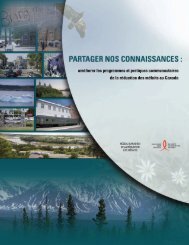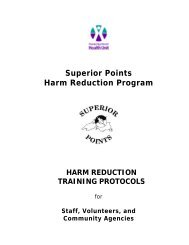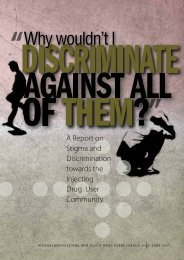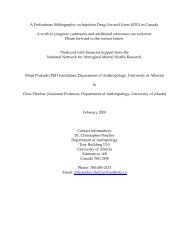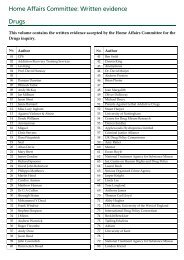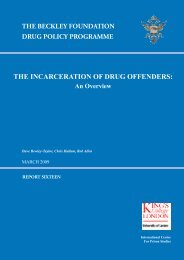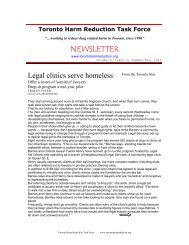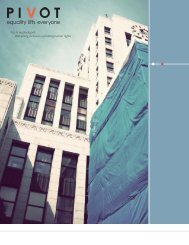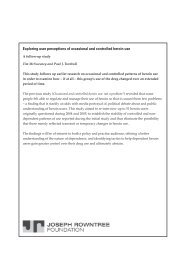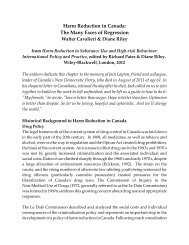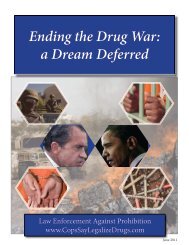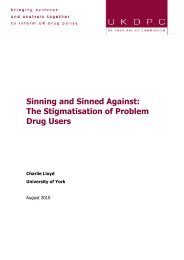VANDU - Genesis, Evolun, Org Struct, Activities - 2001.pdf
VANDU - Genesis, Evolun, Org Struct, Activities - 2001.pdf
VANDU - Genesis, Evolun, Org Struct, Activities - 2001.pdf
Create successful ePaper yourself
Turn your PDF publications into a flip-book with our unique Google optimized e-Paper software.
A Case Study of Vancouver Area Network of Drug Users (<strong>VANDU</strong>)<br />
legitimate participation of the poor in religion and politics. According to Osborn: “The<br />
voice of the poor is the voice of God, and what was most denied and repressed in<br />
society is the collective expression of pain. There are so many institutions that privatize<br />
pain and keep it hidden, whether it is the psychiatrist’s office, the mental health system,<br />
or bars. Facilitating the public expression of pain was the most subversive thing we<br />
could do.”<br />
The method that was developed to organize drug users in the Downtown<br />
Eastside involved a series of steps. The first action involved placing posters throughout<br />
the community that invited drug users to a ‘discussion group.’ The meetings were<br />
organized in a convenient location in order to attract as many people as possible.<br />
During the initial meetings, those in attendance were invited to identify the issues faced<br />
by drug users in an open discussion format. At times, the facilitators would ask for<br />
comments “one person at a time,” as this would ensure that everyone had an<br />
opportunity to speak. All comments were recorded on flip chart paper and reviewed<br />
after the discussion group. Toward the end of the first discussion group, the focus<br />
would shift to a conversation about “how to get more people out to the next meeting,”<br />
and those expressing ideas were invited to come to a planning meeting that would take<br />
place before the next discussion group. According to Livingston and Osborn, this<br />
provided an opportunity for drug users to begin to “own” the meetings as facilitators<br />
and organizers. After several of the discussion groups, the people attending began to<br />
say that “all we do is complain here.” It was at this point that the facilitators would<br />
provide a summary of the concerns expressed as a means of creating a focus for action.<br />
All suggested actions were recorded, and the many ideas that were not acted upon<br />
remained in the records and lists. For example, the suggestion that users get CPR<br />
training remained on the flip charts for a year before it became a reality. The actions<br />
varied and involved organizing demonstrations, creating peer support initiatives, and<br />
inviting guest speakers to come to meetings. When issues or actions reflected the<br />
interests of subgroups (e.g., rice wine drinkers), a subcommittee was created. This type<br />
of activity led to the formation of various groups including the British Columbia<br />
9



